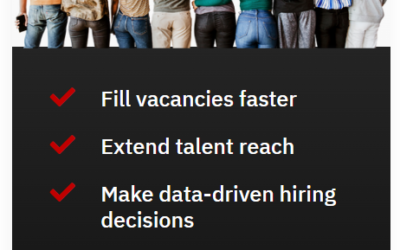Organizations work more effectively when people can work together, pool their ideas and experiences, keep on the same page, focus their energies on common goals. But what are the magic ingredients you will need to make teamwork a game-changer in your organization?
Why teamwork matters to us
Workspend is a Managed Service Provider (MSP) that prides itself on the role of humans to drive contingent workforce management programs.
While we adopt the latest tech tools (like VMS and digital talent ecosystems) to achieve step-change results for our client organizations and supplier network, it’s the quality of our program teams, and their ability to work as teams, that is the real story behind our success.
Team-working has become a Workspend USP. It means we care about teamwork and the business outcomes of doing it well. Which led us to pose the question, is our teamwork success more about culture, governance, or design?
Culture in teamwork
You will know, there’s a big difference between the type of cohesive social culture that exists in a startup, compared to the more strict command and control cultural frame that operates in large corporations.
Harvard Business Review ran an insightful article in November 1996 that helped shine a torch on what defines workforce culture. ‘What Holds the Modern Company Together?’ by Rob Goffee and Gareth Jones paints a picture of organization culture. They argue, through their research findings, that all organizations exhibit various degrees of solidarity and sociability. By understanding the levels of solidarity and sociability that organizations exhibit, helps managers to know how their systems, processes and protocols can be best configured to support, not work against, effective team-working.
While the culture that operates within your organization does not determine levels of collaborative performance, the ignorance of it can lead to management decisions that work against natural human endeavors to work together.

Governance in teamwork
Organizations work in a highly regulated environment these days. This has led to ‘governance exhaustion’ in some cases.
Governance should not be seen as an auditor with a clipboard that monitors what people do; The origins of the term come from the Latin work Kybernan, which means ‘to steer.’ Good governance over your teams is about steering the behaviors that encourage the best outcomes.
To install operational norms of behavior that sustain, some level of formal governance must exist. Leaders need team members to AGREE on norms of behavior that are acceptable to the team, and the protocols that enforce those behaviors. Adopting an inclusive approach to determine how teams should work, overcomes adoption issues and prevents individuals from feeling disenfranchised.
Design in teamwork
To what extent is ‘design’ critical to teamworking success? I would say it’s essential that teams don’t simply appear out of the woodwork, but are designed around some sort of plan. Better designs consider the goals and interests of social groups rather than simply shaping teams around departmental groupings that bring together people with nothing in common.
In my experience, a free-for-all approach to the design of organizational teams doesn’t work well. In the case of knowledge sharing systems, organizations lose important knowledge because it gets stored away in hundreds of digital team repositories, which is no better than storing documents in filing cabinets!
To get the best results, SOMEONE has to be responsible for the operation and governance of any given team. Additionally, other participants need to know who the team owners and leaders are for the teams they collaborate with.
Things leaders can do to make their teams work
If your teams are not working together as well as you’d hope, what can you do to make improvements? We’ve put our thinking hats on and brought together below a list of ‘must-do-well’ points that leaders can adopt to get more out of their teams.
Do knowledge management for people, not to them
Organizations rarely define what success looks like when it comes to measuring the effectiveness of collaboration. Additionally, they have a habit of presuming that users want to participate in a paradigm that’s not of their design. The essence of effective knowledge management solutions is to nurture and encourage team-working in a supportive way to ENCOURAGE the right behaviors that will lead to the outcomes driving the project. TELLING people to share knowledge never works.
Coach-in the benefits of team working
Sounds ridiculous perhaps, but while people are generally WANTING to share knowledge, there are a lot of good personal reasons why they don’t. Removing the obstacles to effective team-working starts by ‘coaching in’ the value of team working to your team members, and spending time with newcomers on how to do it.
Define your teams
A team by definition should share a common interest or goal. These are the factors that bring commonality of interest amongst team members, giving individuals a reason to share. Sitting around the same table and having nothing in common doesn’t create effective organizational units!
Create a single place to net-work
Technology is great but it can sometimes get in the way. It’s REALLY important that team members work on the same common platform to share their content and conversations, otherwise knowledge gets fragmented.
Maintain the cost and currency of data
Nobody wants to visit an intranet site if it’s outdated and offers little value. To be effective, knowledge platforms need to be built around the needs of the micro-communities that use them.
Use intuitive tools
In a digital age, users don’t want to have to spend a lot of time working out how to use a tool, where to store their data—and where to find it. The technology you select needs to fit the need, but it also needs to be friendly, intuitive, and always available to users. People don’t do knowledge sharing in the last hour before they go home to their families, they do it all through the day, wherever they are, and whatever they’re doing.
Learn more about our Total Talent Management solutions

Ian Tomlin is a management consultant and writer on the subject of enterprise computing and organizational design. He serves on the Workspend Management Team. Ian has written several books on the subject of digital transformation, cloud computing, social operating systems, codeless applications development, business intelligence, data science, office security, customer data platforms, vendor management systems, Managed Service Provisioning (MSP), customer experience, and organizational design. He can be reached via LinkedIn or Twitter.
FURTHER READING
SLAs and KPIs: How to Optimize Measuring MSP Success
SLAs and KPIs: How to Optimize Measuring MSP Success The modern workforce is increasingly dependent on contingent talent, making effective contingent workforce management of temporary staff a top priority for many organizations. A Managed Service Provider (MSP) is...
HRO Today’s Baker’s Dozen – Press Release
Workspend Secured Continued Recognition in HRO Today's Baker’s Dozen MSP Listings10th June 2025 - Las Vegas, Nevada–Workspend, a leading global provider of managed services programs (MSP), proudly announces its inclusion in HRO Today’s Baker's Dozen Customer...
How to Scale MSP Services as Your Business Grows
How to Scale MSP Services as Your Business Grows As your business grows, demands on your MSP services will increase. The challenge is identifying which aspects to focus on for the best results and adopting the right approach. Rapid growth can strain first-generation...
Why Building the Right MSP Business Case Is Essential for Growth
Published : April 23rd 2025Why Building the Right MSP Business Case Is Essential for Growth A Managed Service Provider (MSP) can be a game-changer when it comes to handling contingent workforce management, consolidating vendor oversight, and boosting efficiency. Yet,...
How to Define and Choose the Right MSP Service Offerings for Your Business
Published : April 4th 2025How to Define and Choose the Right MSP Service Offerings for Your Business Thinking about a Managed Service Provider (MSP)? It’s a single partner that tackles your contingent workforce, manages staffing vendors, and gets the right people into...
5 MSP Performance Metrics You Should Track to Ensure Success
Published : March 14th 20255 MSP Performance Metrics You Should Track to Ensure Success Managed Service Providers (MSPs) take on essential tasks—from IT support to network monitoring and infrastructure management—so clients can concentrate on their core objectives...
Common Challenges When Setting Up an MSP and How to Overcome Them
Published : March 4th 2025Common Challenges When Setting Up an MSP and How to Overcome Them Finding the right balance of full-time employees and temporary staff is a key strategic goal for many organizations facing rising demands and growing compliance pressures. As...
How to Calculate the ROI of an MSP Partnership
Published : January 9th 2025How to Calculate the ROI of an MSP PartnershipMany organizations feel pressured to manage contingent labor efficiently. A Managed Service Provider (MSP) can handle vendor selection, rate negotiation, compliance tracking, and performance...









